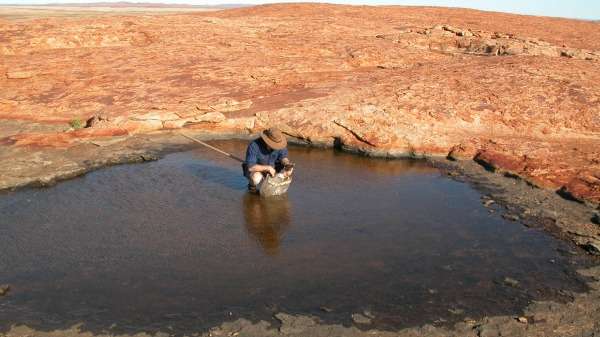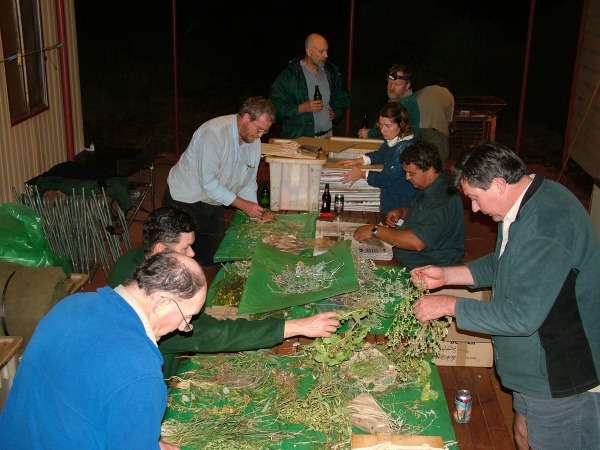Thrill of species discovery in the Pilbara

You may think the heady days of discovering new plants and animals are over—lost to the romance of history when explorers plied uncharted seas on great sailing ships.
But a massive, long-term biological survey of the Pilbara has uncovered an astonishing 615 new species of invertebrates, at least nine new species of reptile and 30 new plant species.
And that doesn't include the 600 or so species of stygofauna discovered living in underground aquifers—most of them previously unknown to science.
The mindboggling array of species was discovered as part of the Department of Parks and Wildlife's (DPAW) and Western Australian Museum's 14-year long Pilbara Biological Survey.
The survey involved dozens of staff and volunteers working at hundreds of survey sites in some of the most remote, logistically challenging and inhospitable areas of the state.
The survey started when the department realised they needed to better understand stygofauna living in underground aquifers, to help inform environmental impact assessments for mining projects.
These tiny creatures often occur nowhere else in the world but their one aquifer.
Thanks to funding support from the resources industry, it wasn't long before the project began to expand to also include invertebrates, vertebrates and plants, both terrestrial and those living in freshwater.

Botanists recorded 1500 of 2300 known plant species in the region, collecting 80,000 samples, known as vouchers, of which 9000 will be kept in the WA Herbarium collection.
Survey biologists studied 304 sites to record 250 species of ants, 430 species of ground beetles, 290 species of spiders, 22 species of scorpions, 40 species of slaters, 140 species of reptiles, 11 species of frogs, 130 species of birds, 17 species of bats and 20 species of small mammals—around half of them new to science.
DPAW assistant director of science Stephen van Leeuwen says the work was often extremely hard, but ultimately hugely rewarding.
Despite the rugged nature of the land, it has come to capture a special place in his heart, he says.
"It's in my blood now," he says. "The vastness, the remoteness of it.
"The ability to find new things, to go to a waterhole and feel like you're the first person to have been there and then look up and see petroglyphs on the rocks, or to go into a cave looking for bats to see where Aboriginal people had once had a fire, the burnt sticks still in place, is extraordinary.
Provided by Science Network WA
This article first appeared on ScienceNetwork Western Australia a science news website based at Scitech.





















